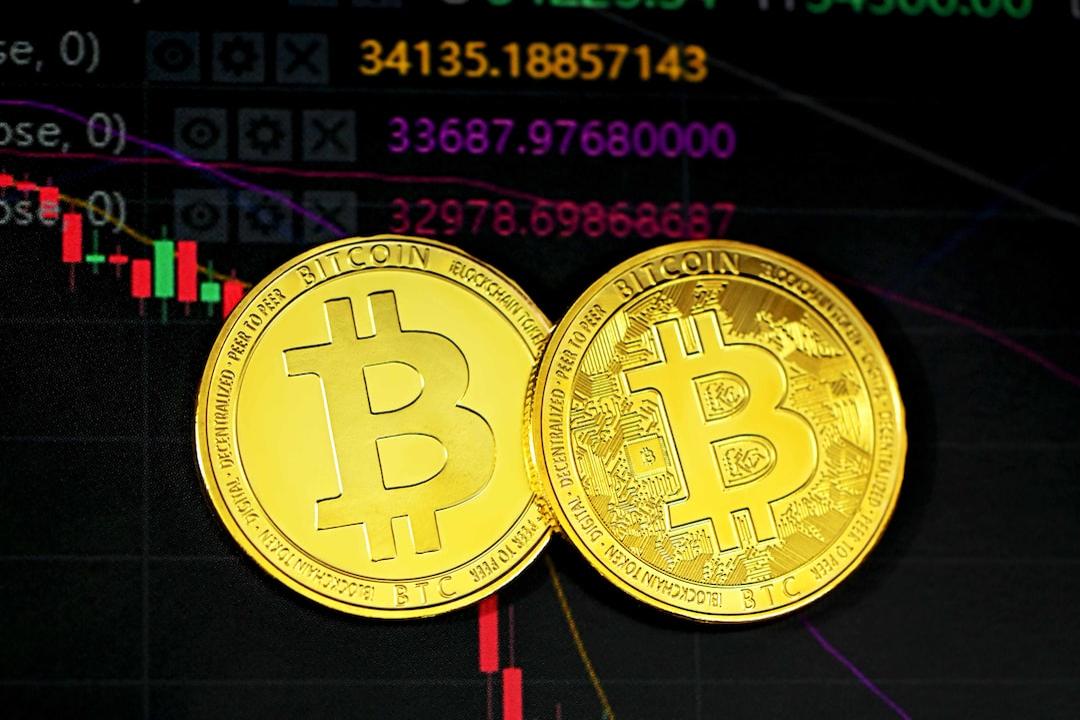What Happened to MANTRA?
With the tailwind of RWA and violent market manipulation tactics, MANTRA once attracted significant attention from investors. However, a dramatic price crash not only posed challenges of price volatility for MANTRA, but also unveiled a complex “black history” behind it, leading to a crisis of trust and governance challenges.
OM Plummets Nearly 90% Overnight: Project Team, Exchanges, and Investors Each Have Their Say
The collapse of OM’s market capitalization worth billions is attributed to a market storm triggered by multiple intertwined factors. In the early hours of April 14, the price of MANTRA’s token OM experienced a sharp decline. According to CoinGecko data, the price of OM dropped by 89.2% in the past 24 hours.

In response to OM’s flash crash, MANTRA’s official statement claimed that the chaos was not caused by the team, the MANTRA Chain Association, core advisors, or MANTRA investors selling off tokens; the tokens remain locked and are subject to the previously announced vesting period, with tokenomics unchanged. They warned against clicking on any fraudulent links or accounts impersonating MANTRA. Additionally, the official pointed out that this incident occurred during a period of low liquidity, possibly due to negligence on the part of the exchanges or market manipulation. The timing and depth of the crash indicated that accounts were suddenly closed without sufficient warning or notification, occurring during a low liquidity period on Sunday night (UTC) when Asia was in the early hours, suggesting a degree of negligence from CEXs or possibly intentional market positioning.
Binance confirmed in its statement that OM’s recent price volatility was primarily caused by “cross-exchange liquidation.” Since October of last year, multiple risk control measures have been implemented for OM tokens, including reducing leverage levels. Starting in January this year, Binance added a pop-up warning on its spot trading page for OM tokens, informing users that significant adjustments had been made to its tokenomics, increasing token supply. Binance stated it would continue to closely monitor the situation and take appropriate actions to protect users and maintain market integrity.
OKX also noted in its announcement that there have been significant changes to OM’s tokenomics since October 2024, and since early March, various similar on-chain addresses have made large deposits and withdrawals across exchanges. Based on market risks, OKX has adjusted its risk control parameters and warned users of significant market risks recently, as changes in token supply could lead to price volatility. Risk warnings have been added to the OM token page. Meanwhile, OKX CEO Star stated that this is a major scandal for the entire cryptocurrency industry. All on-chain unlock and deposit data are public, and collateral and liquidation data from all major exchanges may be investigated. OKX will be prepared with all reports.
Despite MANTRA attributing responsibility to the exchanges, on-chain data points to a more complex picture, raising community questions about potential internal sell-offs and market manipulation. According to Spot On Chain monitoring, 19 wallets suspected to belong to the same entity, which were created in March, transferred 14.27 million OM (approximately $91 million) to OKX at an average price of $6.375 within three days prior to the OM crash. Additionally, The Data Nerd monitoring revealed that in the past three days, five wallets collectively deposited 24.4 million OM (approximately $143.94 million) into OKX. Four of these wallets exhibited the same operational pattern: withdrawing from Binance last month and then depositing into OKX; the other belongs to Laser Digital.
Moreover, according to Lookonchain monitoring, since April 7, at least 17 wallet addresses have deposited a total of 43.6 million OM tokens (worth about $227 million at the time) to exchanges, accounting for 4.5% of the circulating supply. Meanwhile, five hours before the OM token crash, a wallet that had been dormant for a year transferred 2 million OM to Shane Shin, a founding partner of MANTRA’s investment firm Shorooq Partners. This wallet received 2 million OM at a price of $12.58 million but is now valued at only $1.57 million.
However, Laser Digital, a strategic investor in the MANTRA Chain project, responded by stating that Laser has no connection to the recent price decline of OM. Claims on social media linking Laser to “investor sell-offs” are incorrect and misleading. Laser has not deposited any OM tokens to OKX, and the referenced wallets related to OKX do not belong to Laser. Laser’s core OM investment remains locked, with no interest in applying pressure on the tokens or undermining project stability. Transparency is crucial.
Investment firm Shorooq Partners also issued a statement clarifying that the decline was not due to a hack or team sell-off, but triggered by large-scale forced liquidations, which subsequently led to panic selling during low liquidity periods. Shorooq emphasized that its position as a long-term equity investor has not changed and publicly disclosed relevant wallet addresses to ensure transparency.
With the project team, exchanges, and investors each having their say, the deeper underlying trigger of this crash may stem from MANTRA’s recent adjustments to its tokenomics. Recently, MANTRA announced that a community proposal would unify OM as a native mainnet token, abolishing the dual-token strategy, but this also brought technical challenges. Therefore, the team decided to abandon the original ERC-20 OM and establish OM on the MANTRA Chain as the standard version. At the same time, MANTRA announced it would double the supply of OM, increasing from 888 million to 1.777 billion tokens, and introduce a 3% annual inflation rate to incentivize staking. Although this move aimed to support ecosystem growth, the significantly increased circulating supply and unlimited inflation mechanism were perceived as undermining investor confidence.
It is worth mentioning that despite the significant drop in OM, large-scale token sell-offs are still ongoing. Onchain Lens (@OnchainLens) recently monitored that the MANTRA DAO staking wallet sent 38 million OM (approximately $26.96 million) to Binance’s cold wallet.
Early Controversy Over Scam Allegations: Heightened Control and Narrative Traps Behind the Surge
MANTRA originated from MANTRA DAO, established in 2020, initially focusing on staking, lending, and asset management services. However, MANTRA DAO was early on perceived as a scam cloaked in popular tags like DeFi and Polkadot. Reports from Wu Shuo Blockchain and Hive Finance indicated that the core team and advisors of Mantra DAO had questionable backgrounds, including identity fraud and even a history of scams, with substantial controversy surrounding founder Calvin Ng’s background linked closely with the online ### site 21Pink. At the same time, the project itself had not yet realized its technology and functionalities, but Mantra DAO relied on marketing tactics and false partnerships to attract investments.
Moreover, MANTRA had previously fallen into legal disputes due to internal controversies. In early 2022, RioDeFi filed a lawsuit against MANTRA DAO, alleging issues regarding ownership, governance, and asset misappropriation. RioDeFi claimed that it founded and developed MANTRA DAO in 2020, but the core team of MANTRA DAO (including co-founder John Patrick Mullin and five others) ceased financial reporting after 2021, misappropriating assets and taking control of the project. MANTRA DAO argued that as a DAO, it was governed by OM token holders, not by RioDeFi. In August 2024, the Hong Kong High Court intervened, ordering key figures of MANTRA DAO to disclose financial records in response to allegations of asset misappropriation and unauthorized control. This case became the first global judicial review concerning DAO ownership and governance.
In 2022, MANTRA DAO announced its official rebranding to MANTRA, initiating a brand restructuring, indicating its attempt to transition from a decentralized autonomous organization (DAO) to a broader blockchain ecosystem. Since 2024, MANTRA has drawn attention due to the strong surge of OM. CoinGecko data shows that in 2024 alone, OM skyrocketed by over 168.8 times. Meanwhile, DeFiLlama data indicated that OM’s fully diluted valuation (FDV) once reached $15.39 billion in March this year, but has since plummeted to $1.25 billion. However, contrasting sharply with its high valuation, OM’s total locked value (TVL) has remained low, maintaining only in the hundreds of thousands of dollars since 2023.

The project team’s high level of control and the fervor surrounding the RWA narrative are considered significant reasons for OM’s rise. On one hand, according to crypto analyst Mosi, the MANTRA team holds 90% of the “circulating supply” of OM tokens, with the actual market circulating supply constituting only 5% of the fully diluted valuation (FDV). However, the strategy of high control has also laid the groundwork for concentrated chips and weak liquidity. Rui, a member of HashKey Capital, revealed that MANTRA operates as a ground-executive OTC platform, with the off-exchange scale reaching at least $500 million over two years, employing a “new OTC token to old OTC sell-off” model, until the final unlocked chips “OTC remain unmovable” exploded.
On the other hand, MANTRA has been active in the RWA sector, releasing a series of favorable signals, including establishing a $109 million ecosystem fund, collaborating with UAE’s DAMAC Group to tokenize $1 billion in assets, bringing in Google as a validator and infrastructure provider to launch RWA accelerator programs, and tokenizing Dubai’s MAG Group real estate assets valued at $500 million.
The involvement of Middle Eastern capital marked a turning point in MANTRA’s development. According to Ye Su, Founding Partner of ArkStream Capital, in 2023, when OM’s FDV fell to $20 million and was nearly abandoned, a Middle Eastern capital intervened through a broker, retaining only the CEO position. This Middle Eastern capital possesses substantial physical assets such as luxury homes and resorts, and subsequently packaged OM as a real asset tokenization (RWAfi) project. Ye Su noted that under high control, OM achieved the highest growth rate on Binance in 2024, realizing a 200-fold increase, and the team is still promoting OTC business.
Public information also shows that high-ranking executives such as MANTRA co-founder and CEO John Patrick Mullin, co-founder Jayant Ramanand, and CTO Matthew Crooks have all left the company. Funding background indicates that MANTRA announced in March 2024 that it had secured $11 million in financing led by Shorooq Partners. It is understood that Shorooq Partners is a leading venture and alternative investment management firm based in Abu Dhabi, focusing on tech startups in the Middle East, North Africa, and Pakistan (MENAP). After announcing investment from Shorooq Partners, MANTRA launched an incubator at the Dubai World Trade Center, focusing on RWA tokenization projects in the Middle East and North Africa region.
Overall, the multiple factors, including unresolved shadows from early controversies, a highly controlled token economy, behind-the-scenes manipulation by capital, and the momentum of the RWA narrative, collectively form the multifaceted footnotes of this crash tragedy.
This article is collaboratively republished from: PANews

